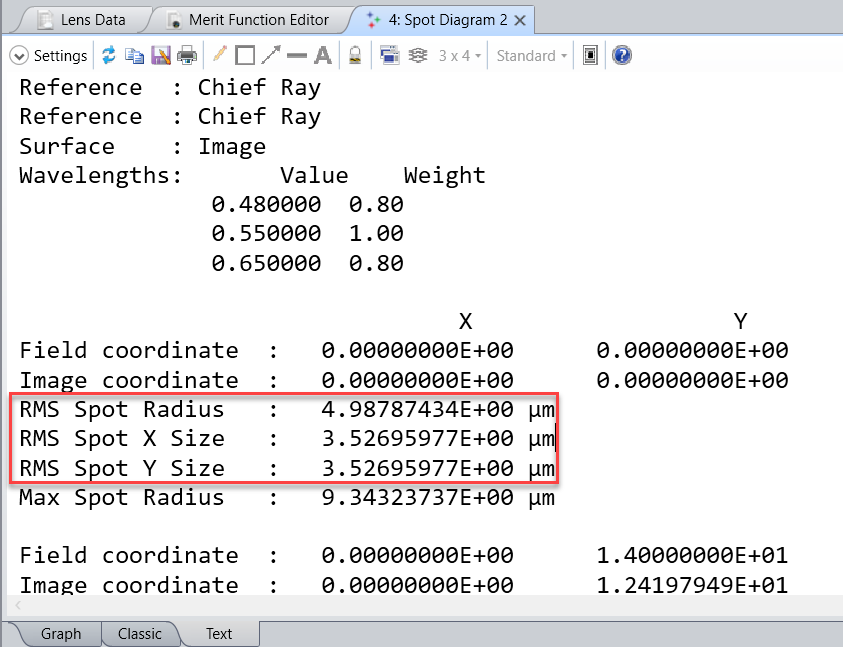Good morning,
I am designing a broadband spectrometer (currently in sequential mode). I think someone may answer the following questions way faster than I can.
I am interested in measuring the spot size in the dispersion direction (therefore not as a general RMS parameter, as it is usually given). Is there a way in Zemax to automatically measure it through the merit function?
I know that the optimization wizard allows to choose a X Weight and an Y Weight. Is there any reference I can read of the topic?
Can you advice any specific reference on how to relate the calculated RMS spot size in Zemax to the spectrometer resolution?
Thank you very much,
Cinzia









